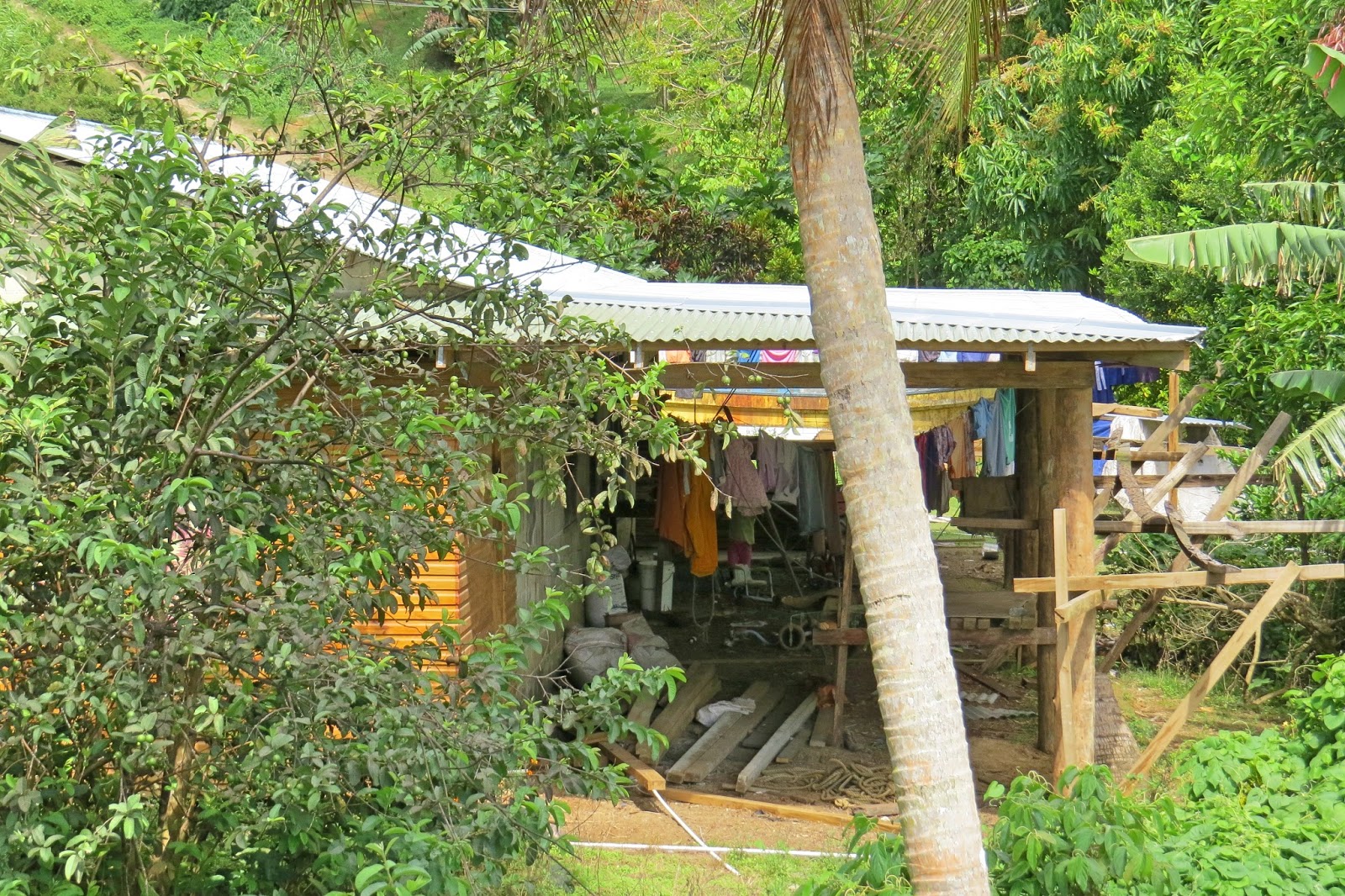 |
| We’d been warned against purchasing locally caught fish in Fiji when it was often caught close to the shore where bacteria is heavy in the waters from sewage disposal. As a result, we never purchased any fish during the past four months. I was looking forward to cooking fish once we arrived in New Zealand, our next stop in our journey. |
Today’s photos are from the post on this date in 2015 while staying in Pacific Harbour, on the island of Viti Levu, Fiji when visiting the local farmer’s market. For more details on this post, please click here.
It almost feels like yesterday, when we spent the holidays in Fiji five years ago, living on two islands; four months on the smaller island of Vanua Levu and one month on the main island of Viti Levu. In each case, we had exceptional experiences, even during the holiday season.
 |
| Dried leaves used for weaving rugs and other items. |
Having little opportunity to interact with others, on either island when tourists quickly came and went, every aspect of our experiences was on our own with one or two exceptions; Sewak, a neighbor in Savusavu, and a lovely newlywed couple while in Pacific Harbour with whom we dined out before they left to return to the US.
A particular delight in Fiji was the friendly nature of the local shopkeepers, household helpers, and people we encountered along the way. Some property owners and managers of holiday homes, we’ve rented have made a concerted effort to socialize with us while others are kind and friendly but standoffish to a degree.
 |
| Pineapple is a commonly grown fruit in Fiji, often available for the taking in many areas. At the farmer’s market, they mostly sell to visitors, not as many locals. |
I suppose it was no different when either of us owned and managed rental properties in our old lives. We maintained a level of aloofness in the event something went wrong and as the owner/manager, we’d have to remain “professional” in the event of any potential issues. We get this.
Of course, those that made the effort, have since become lifelong friends such as Louise and Danie in South Africa. The fact they’ll manage our holiday rental is relevant, as we totally respect and honor the integrity of the business-side of our relationship. The rest is pure friendship and fluff.
 |
| Pineapple leaves stripped from the pineapples are used for weaving and decorations. |
Louise and Danie will be the first people we’ll see when we arrive and the last people we see when we depart with many more times in between for pure socialization and fun. We can’t wait to see them and all of our other many special friends in Marloth Park, providing all goes well in 15 days.
And now? How is it going? We’re doing OK, relatively cheerful, entrenched in our usual routines, and anticipating beginning to go through our luggage in order to lighten the load when it will soon be time to pack. I am totally prepared to once again, “say goodbye” to many of my clothing items in order to accomplish this daunting task.
 |
| Rows upon rows of pineapples for sale for one third the cost as in Hawaii. |
Fortunately, unloading a number of clothing items will be easy when many of them were purchased a year ago in Arizona when I was 25 pounds, 11.3 kg, heavier. I won’t be saving any of those in the event of a future weight gain, which I’ve promised myself won’t happen again. With strict luggage weight restrictions, we can’t afford such a scenario as keeping clothing we don’t wear.
While in this hotel, I’ve washed and worn the same two pairs of black stretchy pants that still fit and three shirts that are very baggy. During this entire almost 10 months I haven’t worn a bra (TMI) and dread having to do so going forward. It’s still uncomfortable on my chest from the open heart surgery and may remain so indefinitely.
 |
| The look on this kid’s face is priceless as he checks out the big slices of locally grown watermelon at the farmer’s market in Suva. Hope his dad made a purchase. |
But, on travel day, I’ll need to bite the bullet to be “appropriately dressed” in public. The only notice anyone took of me while walking in the corridors was as this masked “mean” woman telling everyone to put a mask on, or cover their nose with their mask. I still don’t get why people don’t cover their nose!
That’s it for today, folks. We hope you have a pleasant day as we wind down this dreadful year toward the New Year.
Photo from one year ago today, December 28, 2019:
 |
| With no new photos, one year ago we posted this photo on this date in 2013 giving a perspective of the small size of this island, somehow appealing to her for its varied vegetation. For the story posted, one year ago, please click here. |

























































